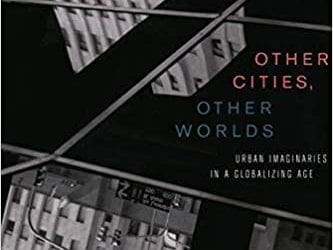Observing Under the Splendor of the Chilean Sky
Classical Observing and Other Approaches

Cerro tololo inter-american observa- tory in chile in september 2005. Photograph by A. Pasten, A. Gomez and NOAO/AURA/NSF
I look at the sky. The stunning Chilean nighttime sky. Walking outside from the cozy control room of the telescope, from where I control the instrument and make my observations, I let my eyes adapt to the night and the stars come into focus. It is awe inspiring, and a bit overwhelming. The universe is laid out before me, with our Galaxy taking center stage as a mottled stripe across the sky, while two nearby galaxies, the Magellanic Clouds, hover around the South celestial pole impersonating real clouds. Amazingly enough, as I walk outside on this star-filled night, I really don’t need a flashlight. Although there is no moon, the sky is bright with stars and I can see my surroundings clearly in starlight. It is an amazing sensation.
Earlier, I gather with a group of colleagues at sunset, watching from the western wall of the parking lot on the summit for the “green flash” as the sun sinks into the ocean. The sky overhead is losing the bright, almost blinding, blue color it has shown all day. As is often the case, not a cloud has been seen over Cerro Tololo the whole day, which bodes for an excellent night of observing. We are the astronomers gathered on this summit tonight, each pursuing his or her own investigation in one of the telescopes here, each having competed and “won” a few nights of time on the telescopes and each having made the long journey to this mountaintop to use the facilities under the pristine skies of northern Chile. We are fewer each year, but we know the special nature of this place, recognizing it rationally but also feeling it as we watch the sunset and relax before turning to go to work for the night.
In years past there would be many astronomers here, usually one or more in each telescope. Often during the night the astronomers would visit other domes to discuss what projects were being pursued, how the instrumentation was working, and how clear the night was. The nights are often clear at Cerro Tololo, more than 300 nights per year on average, and astronomers come from all over the world to use the telescopes here. It is a long trip for most, some 5,000 miles from the U.S. mainland, but these travelers are usually rewarded with conditions that are among the best in the world to observe the cosmos. That is, if they come.
Astronomy is changing. The success of space-based observatories has led the way. Of course astronomers don’t travel to those telescopes, so observations are made for the astronomer and the data are then packaged and sent back. In this case the astronomer never leaves his or her office. This mode of observing is changing expectations, and more and more changing the way ground-based astronomy is done. To meet expectations, we (the national observatory) now offer a range of observing modes. The most like the space-based model is queue observing, where one project’s observations are only made when the conditions are right. Observations are made by a trained technician or resident astronomer, based on detailed instructions from the astronomer who proposed the project. Service observing is similar, in that the trained technician does the observations but on a specified night. And remote observing allows the investigators to actually participate in the observations, but at a distance, communicating with the technician on the mountain via telephone or video from their own office or remote observing room at their home institution.
I myself prefer “classical” observing, traveling to the telescope and participating directly in the observations. The advantages are quantifiable, given that I can modify the observations based on the conditions, investigate problems in real time, and work closely with the local technical staff to optimize my use of the telescope and instrument in pursuit of my science. But perhaps just as important are the qualitative aspects. I am on a mountaintop, working with the team here and focused on my science. I have time to think, many miles away from home and office.
I must go back in and continue my observations. I take one last long look at the sky, and realize yet again how special this place, and this experience, is.
Spring 2009, Volume VIII, Number 3
Chris Smith is Director of the Cerro Tololo Inter-American Observatory (CTIO), the southern branch of the U.S. National Optical Astronomy Observatory (NOAO), operated by the Association of Universities for Research in Astronomy (AURA) on behalf of the National Science Foundation. He moved to Chile immediately after obtaining his PhD at Harvard (working with Bob Kirshner) to take a postdoctoral position at CTIO, and has now lived there for over 15 years.
Related Articles
Editor’s Letter: The Sky Above, The Earth Below
When I first started working on this ReVista issue on Colombia, I thought of dedicating it to the memory of someone who had died. Murdered newspaper editor Guillermo Cano had been my entrée into Colombia when I won an Inter American Press Association fellowship in 1977. Others—journalist Penny Lernoux and photographer Richard Cross—had also committed much of their lives to Colombia, although their untimely deaths were …
Other Cities, Other Worlds
Author of a marvelous book that excavates the palimpsests of memories encrypted in the image-filled voids of Berlin, Andreas Huyssen extends his investigation of the urban imaginary in…
Dirty Secrets, Dirty War: The Exile of Editor Robert J. Cox
t may be argued that Dirty Secrets, Dirty War: The Exile of Editor Robert J. Cox should have been written three decades ago, most likely in 1981, when Cox was enjoying, as I do now, a Nieman fellowship…




